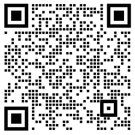Characteristics and application circuit of optocoupler
1. The role of optocoupler in adjusting voltage of switching power supply
We know that as a switching power supply, the power supply of the optocoupler in its circuit is obtained from the secondary voltage of the high-frequency transformer. Once the output voltage decreases due to various reasons, the feedback current will increase accordingly, and the duty cycle will also The output voltage will increase accordingly, and the output voltage will increase; if the output voltage increases, the current will decrease and the duty cycle will decrease, resulting in a decrease in the output voltage. Once the secondary load of the high frequency transformer is overloaded or the switching circuit is faulty, there is no optocoupler power supply. At this time, the optocoupler controls the switching circuit to not start to vibrate, and ultimately protects the switching tube from breakdown and burns. Therefore, the optocoupler is in the switching power supply. Generally play three functions of isolation, providing feedback signal and switching.
The following figure is a switching power supply circuit composed of optocoupler EL817 and voltage regulator tube. Note that this type of optocoupler is generally a linear optocoupler
2. The optocoupler acts as a switch in AC and other loads
Because optocouplers have unidirectional transmission, and the input and output are electrically isolated, so that the output signal has no effect on the input, it is widely used in various isolation circuits. For power electronics, it is used in AC load applications. More often, an isolation circuit with strong anti-interference ability is formed together with the triac, as shown in the figure below. Pay attention to adding a current-limiting resistor, and adding an RC absorption circuit or paralleling a varistor to the output load, which helps protect the load .
3. zero-crossing detection function
There are actually many ways to achieve zero-crossing. There are two diodes in series, and it can also be converted by optocouplers. As shown in the figure below, two optocouplers are used, AC input, and two optocouplers are connected in reverse parallel. In the negative half cycle, the two optocouplers are turned on in turn. When the mains is not at the zero-crossing point, only one optocoupler is turned on, and the output is low at this time. When the mains goes to the zero-crossing point, the two optocouplers are not conducting. At this time, due to the effect of R3, pin outputs a high level, so that a pulse signal with a period of 10ms is obtained at the output end. Since this circuit is isolated by an optocoupler, this zero-crossing detection circuit is safer than a circuit with a series diode.
4.other applications
In addition to these three, there are other applications for optocouplers, such as trigger circuits, logic circuits, and pulse amplifier circuits.

